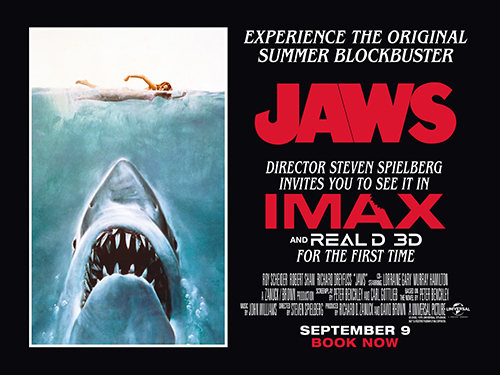
In 1975, Jaws made history as the inaugural summer blockbuster. And this September at Cineworld, we're thrilled to present Steven Spielberg's hair-raising classic in IMAX and RealD 3D for the first time.
Spielberg's adaptation of Peter Benchley's potboiler novel overcame a famously choppy production to enjoy astonishing levels of success. Beset by sinking shark props (collectively named Bruce after Spielberg's lawyer), arduous conditions shooting on the open sea and antagonistic rivalry between stars Robert Shaw and Richard Drefyus, it's a wonder the film was completed at all.
But completed it was, bolstered by John Williams' chilling, Oscar-winning score that took the place of the malfunctioning prop shark. Jaws exploited its prime summer release slot, honing an aggressive merchandising campaign, in line with a saturation release throughout America, to gross more than $470 million worldwide.
In IMAX, Spielberg's chiller threatens to become even more terrifying and engulfing. Are you brave enough to dip your toes into the immersive world of IMAX as the shipping vessel Orca tackles the killer shark? Can you watch Ben Gardner's head emerge from the boat without screaming? And how will your nerves stand up as Williams' propulsively choppy score lunges at you from all sides?
Jaws in IMAX certainly promises to be an experience for the ages, so here are five unforgettable sequences to revisit again in the IMAX format.
1. Chrissie's death
Stunt-person Susan Backlinine made movie history as the shark's ill-fated first victim, Chrissie Watkins. Spielberg proves his mastery of horrific suggestion, working around the non-existent prop shark by shooting the sequence above the waterline at night, and using Backlinine's horrifying screams to fill in the gaps as to what's occurring beneath. Such techniques would later be employed in the likes of Jurassic Park.
It's been rumoured that Backlinie's cries of agony were real when the underwater rig to which she was attached injured her ribs, although she's subsequently denied this.
John Williams' two-note theme makes its first appearance in context after the opening credits, cleverly deployed as an insidious suggestion of the shark's presence. In other words, when there's an underwater shot absent the theme, the shark isn't there. Brilliantly, the tempo of the piece increases in line with the shark's proximity to its victims, indicating a primal heartbeat and atavistic intent.
It demonstrates a level of Hitchcockian mastery, although this brilliant approach only came about as a result of the movie's manifest technical challenges.
2. Alex Kintner is devoured
It may be rated 12A but Jaws sports an uncompromising streak that may well shock contemporary audiences. For one thing, it's a movie where the kid doesn't survive, reinforcing the story's elemental message of nature red in tooth and claw.
The build-up to the death of the unsuspecting Alex Kintner is a masterclass in suspense. By this stage in the movie, Spielberg has attuned the audience to his use of Williams' music, teasing us by intercutting between potential victims but dropping the score from the sound mix, essentially positioning them as red herrings.
However, upon the reveal of the theme, as the camera prowls beneath Kintner's raft, the sheer horror of the situation becomes clear. The subsequent aftermath, accompanied by the famous zoom-in/dolly-out shot on star Roy Scheider (another Hitchcock trope), still leaves us all shaking.
3. The shark is sighted
Such was the mercurial nature of the Jaws production that many of its most famous moments came out of improvisation or last-minute additions to the script.
Roy Scheider ad-libbed the famous line "You're gonna need a bigger boat" after his character, Chief Brody, glimpses the shark lunging from the water. It subsequently became the most famous line from the movie, and it helps Jaws transition from a creature feature thriller into an ocean-bound, man vs beast epic.
The chemistry between Scheider, Robert Shaw (playing grizzled sea captain Quint) and Richard Dreyfus (playing oceanographer Hooper) becomes immediately apparent amidst the confines of the Orca. The camera starts swirling the boat as John Williams' brassy orchestral swells brilliantly escalate the nature of the conflict with the beast, now revealed to be a monstrous 25-foot man-eater.
4. The story of the U.S.S. Indianapolis
The real reason for the success of Jaws resides in its quieter, character-based moments. One really gets to know the three wildly disparate individuals on the hair-raising, life-or-death shark hunt, and this level of emotional involvement makes the endgame all the more gut-wrenching and viscerally frightening.
Our anticipation of said endgame is increased tenfold by the quietly terrifying account of the U.S.S. Indianapolis. Conceived and delivered as a monologue by the (usually drunk) Robert Shaw, it spins an almost archetypal account of man vs nature, ripped from the devastating real-life account of the ill-fated naval carrier.
The account liberally mixes fact and fiction, but there's no denying Shaw's conviction as his character Quint reveals what has haunted him for so many decades. It's one of the scenes that will surely be lent added vitality in IMAX: the all-encompassing surround sound promises to enhance the quiet sloshing of the waves and the eerie, undulating tone of John Williams' music, which apes the hushed, ghostly tone of a painful memory breaking into the present.
5. Showdown with the shark
For a movie with such a famous soundtrack, it's striking that Spielberg plays out the first half of Jaws' showdown with no music at all. It helps throw further emphasis onto subtle details of the sound design – the creaking of the Orca's hull as it starts to sink, or the clanging of the ship's bell that serves as a funereal send-off to the hideously devoured Quint.
Spielberg's use of wide shots to embody the showdown between Brody and the shark is all the more remarkable when one considers how close the film crew was to land. Many of the film's set-ups had to be repeated to costly effect when the illusion of Brody being in the middle of nowhere was shattered by an errant boat or a piece of coastline hoving into view.
Such agonising complications are nowhere to be seen in the final edit, which is masterfully stitched together by Oscar-winning editor Verna Fields. The shark's eventual explosive demise, accompanied by the cathartic piano/harp swirls of Williams' valedictory score, is the rollercoaster climax we deserve, but Spielberg is wise enough to end on a quiet, character-driven note between Brody and the just-about-made-it Hooper. That's why Jaws endures as a classic.
Are you ready to revisit a cinematic masterpiece in IMAX for the first time? Then click here to book your tickets for Jaws. The movie is re-released in Cineworld on September 9th.



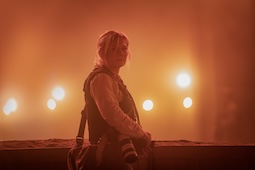

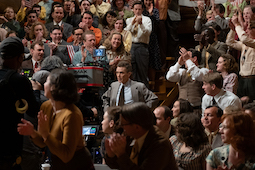

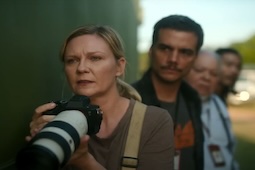
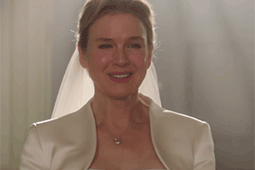

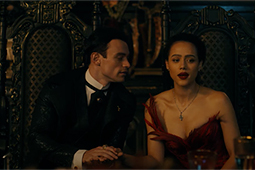
.jpg)


.jpg)
.png)






